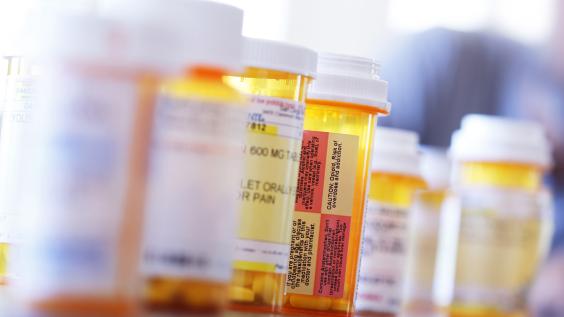How Mark Cuban’s Prescription Drug Disruption Could Save Lives

Table of Contents
Author(s)
Share this Publication
- Print This Publication
- Cite This Publication Copy Citation
Hagop M. Kantarjian, "How Mark Cuban’s Prescription Drug Disruption Could Save Lives" (Houston: Rice University’s Baker Institute for Public Policy, November 29, 2022).
The development of highly selective and effective treatments that target the cause of chronic myeloid leukemia (CML) was nothing short of a therapeutic miracle. Introduced into standard therapy in 2000, they changed CML from a fatal disease to a chronic condition compatible with normal life.
Today, several such oral drugs are available on the market. But they cost, on average, more than $200,000 per year when under patent — which can be for 12 to 20 years or longer, depending on how the pharmaceutical company modifies the patent's conditions. With many insurers charging patients out-of-pocket expenses of up to 25%, such drugs — though readily available — can become unaffordable without an annual cap, making patients “functionally uninsured.” It is estimated that up to 30% of patients with CML and other cancers are in this situation.
The first such drug for CML was imatinib (Gleevec). It lost its patent in 2017 and is now available as a generic drug, with 15 formulations on the market in the U.S. The common wisdom is that once four to five generic versions of a drug become available, its price falls drastically. Sadly, this has not been the case for CML drugs, nor for most cancer drugs in the existing health care system.
It is true that the average price of the 15 imatinib generics has fallen from more than $130,000 per year to about $5,000 per year (a price still much higher than the cost to manufacture the drug, which is less than $400 per year). But that is the price drug companies charge. Once a drug is manufactured, it starts a complex, often inconsistent supply chain path, allowing different intermediaries along the way to insert their own profit margins.
These include wholesalers, pharmacies and hospitals, group purchasing organizations and pharmacy benefit managers. The price that wholesalers (including the top three U.S. drug distributors, AmerisourceBergen, McKesson and Cardinal Health) pay to acquire drugs from manufacturers is called a wholesale acquisition cost, or WAC, while the price that pharmacies or hospitals pay wholesalers is known as the average wholesale price, or AWP. Pharmacies and hospitals are usually part of a group purchasing organization that negotiates to buy drugs at a lower cost, called the GPO price. As the supply chain moves closer to the patient, other intermediaries become involved, including pharmacy benefit managers, who control what medications are on insurance formularies. The pharmacy benefit managers negotiate drug prices directly with manufacturers and often maximize their leverage by securing deals with manufacturers for significant rebates. This increases both the profits of pharmacy benefit managers and the prices patients pay.
The end result is a price bubble that benefits many of the players, but not the patient. In the instance of generic imatinib, while the average price of the drug when it leaves the manufacturer is $5,000 per year, 12 of the 15 generics end up costing the patient the same price — an astounding $132,000 per year.
Enter into this mix billionaire Mark Cuban, who recently launched Cost Plus, an online drug company that bypasses distributors and offers generic medications to patients (with a physician prescription) at cost plus 15%. The company’s mission is to reduce the complexity of the drug supply chain and charge the lowest possible prices while still making good profits. Among the list of available drugs is generic imatinib, offered at $47 per month. Purchased through this process, the price can now be as low as $565 per year, which is relatively affordable and even cheaper than what a patient with prescription insurance might pay.
This is a model that physicians and patients should publicize, encourage and use often. Similar companies are following the same model, including Civica Rx, ScriptCo Pharmacy, Honeybee Pharmacy, GeniusRx, Ro Pharmacy and hopefully many others. Each has its variations but adheres to the common theme of bypassing intermediaries and providing the fastest and cheapest route for a drug from manufacturer to patient. A study in the Annals of Internal Medicine has estimated that Medicare could have saved, conservatively, $3.6 billion in 2020 had it purchased 77 generic drugs from Cuban’s Cost Plus Drug Company.
There are some downsides to this model, as evidenced by Cost Plus. First, most of the medications offered are generics and are only for chronic conditions. Second, patients with chronic conditions are often on multiple medications, and if they cannot obtain all their prescriptions through Cost Plus and need to use other pharmacies, their prescriptions will be fragmented. And third, Cost Plus does not bill insurance, and patients will not be contributing to their deductibles.
These issues will hopefully be mitigated over time as the success of this model over the traditional distribution path encourages Cost Plus and similar companies to expand their inventories and accept insurance. By disrupting the traditional U.S. drug supply chain, the “Mark Cuban effect” could significantly reduce the cost of drugs and health care in the U.S., in addition to making many much-needed cancer drugs available and affordable for more patients. This could save the lives of thousands of patients over the next decade.
It's an idea whose time has come.
This commentary originally appeared in the Dallas Morning News (subscription required).



